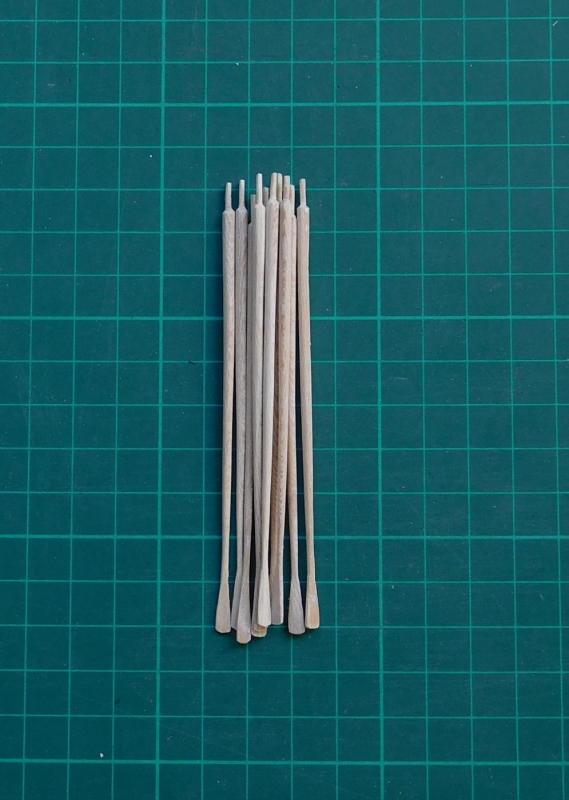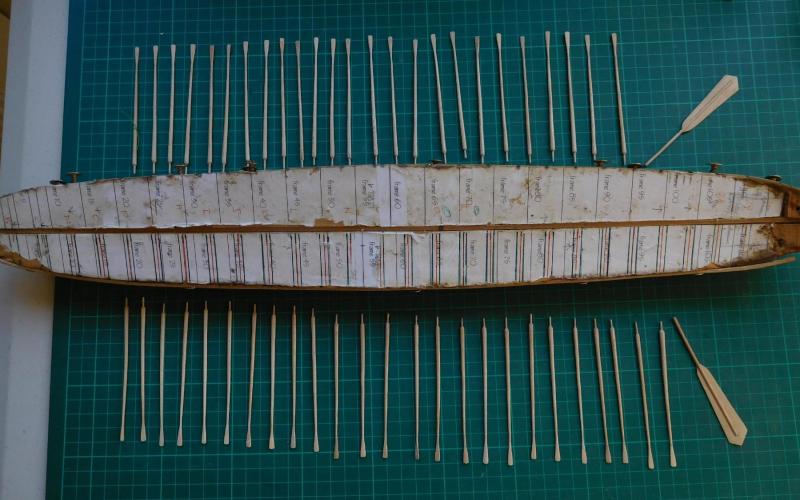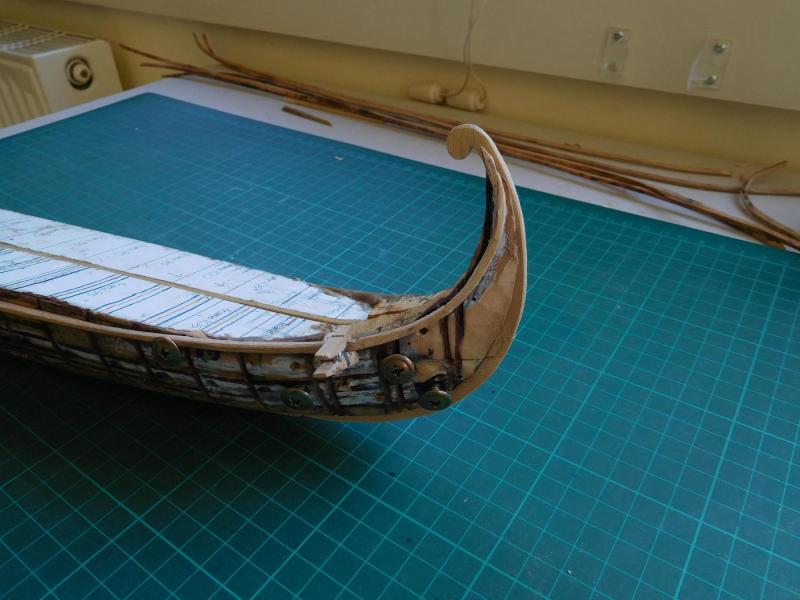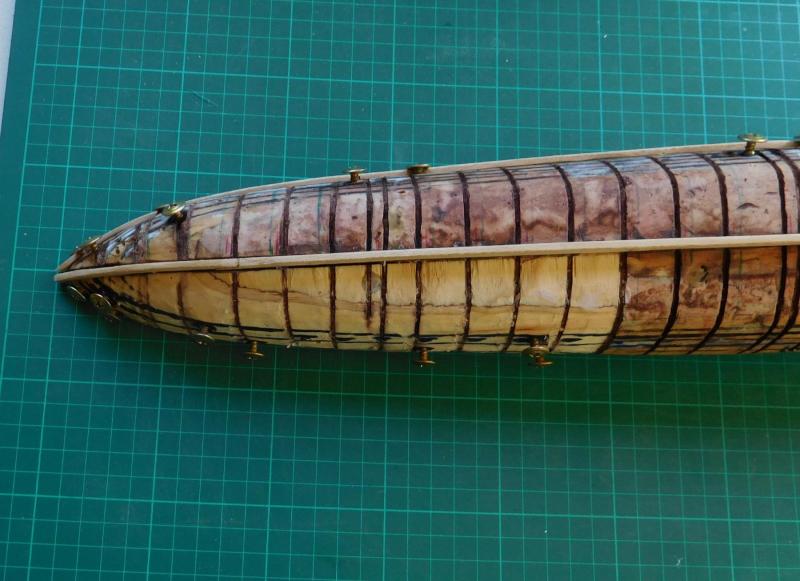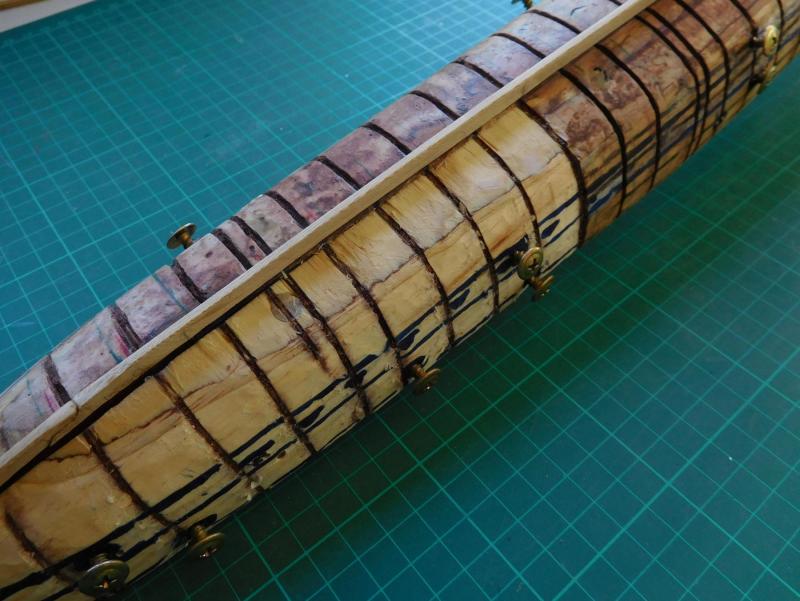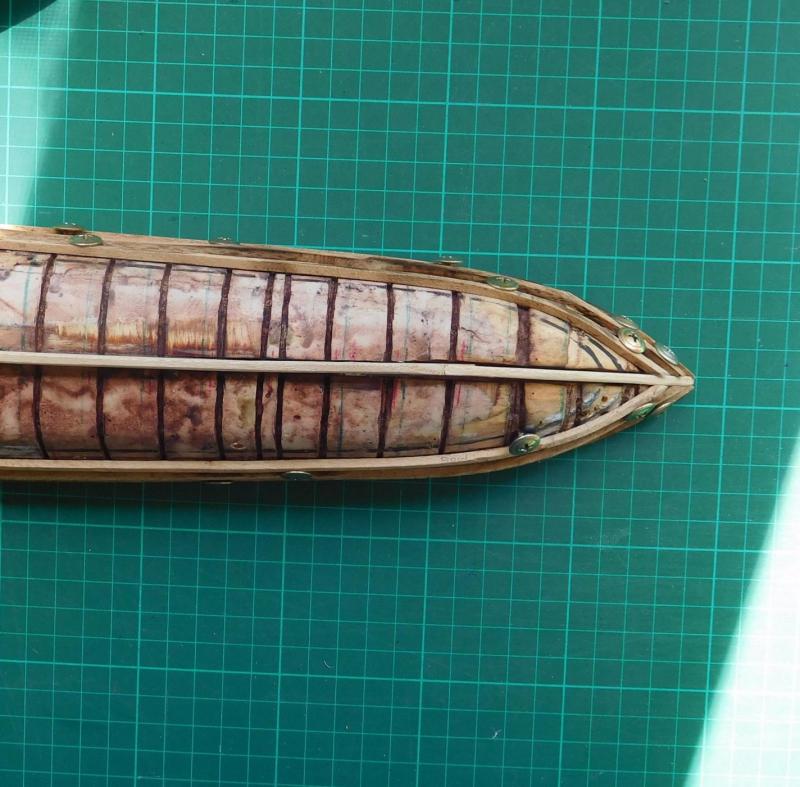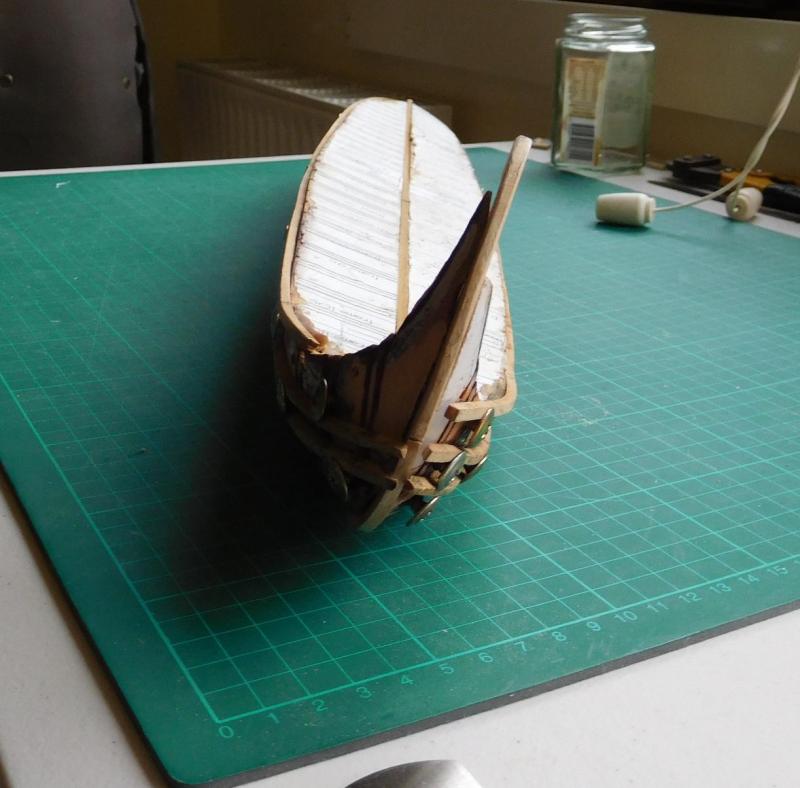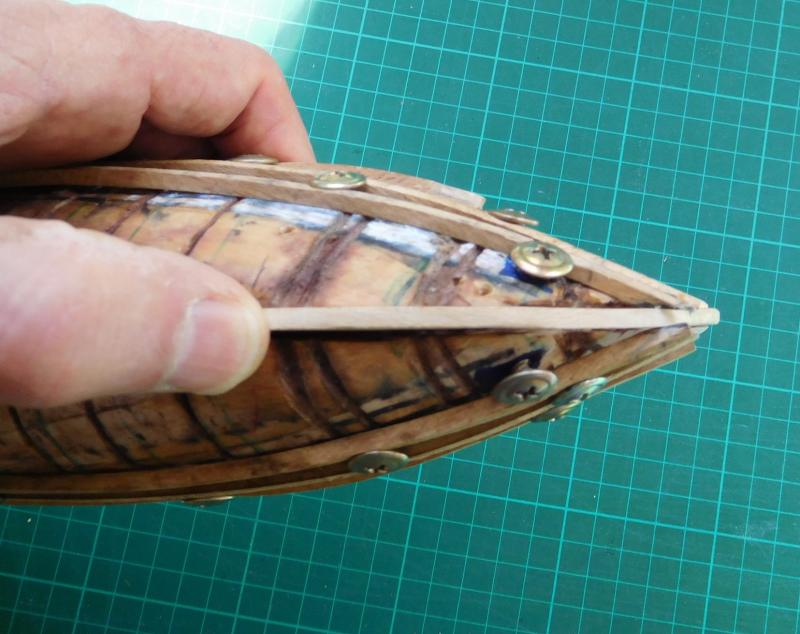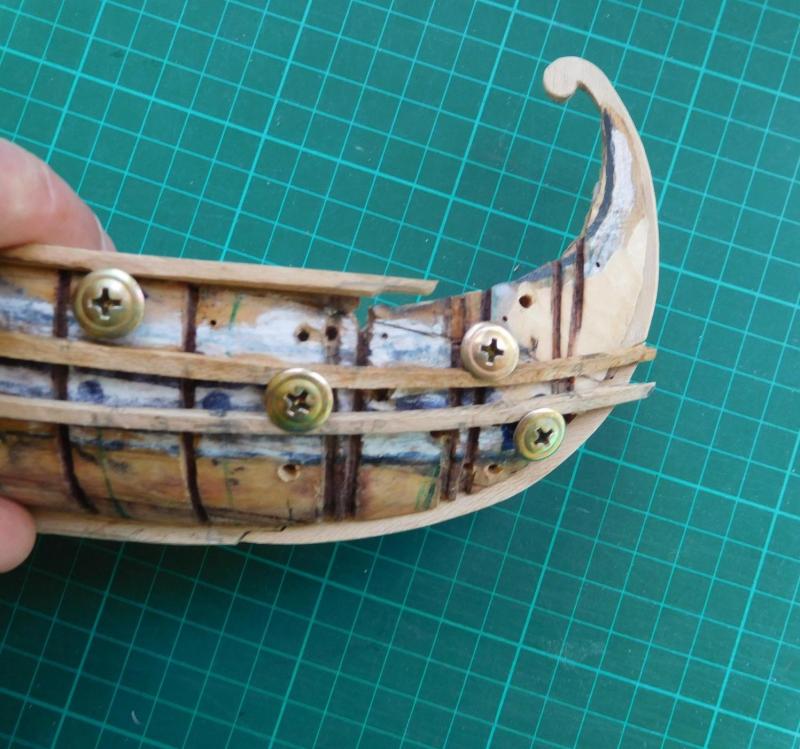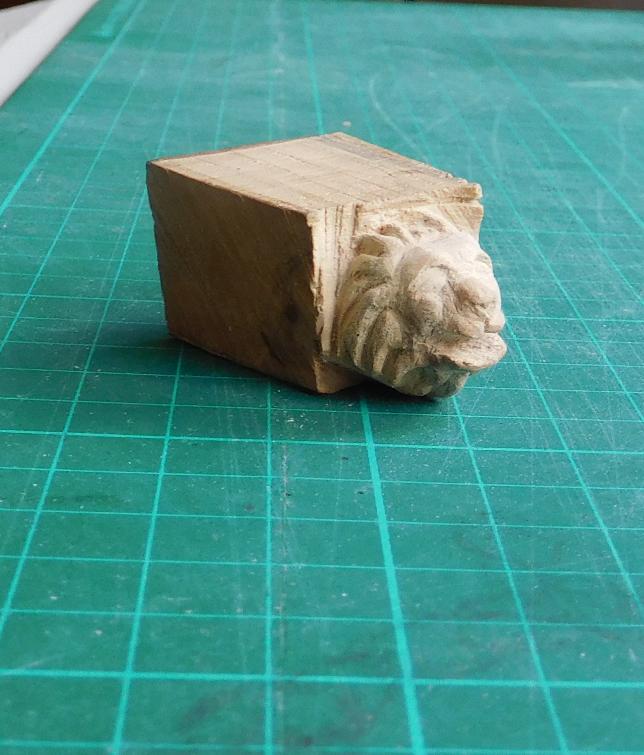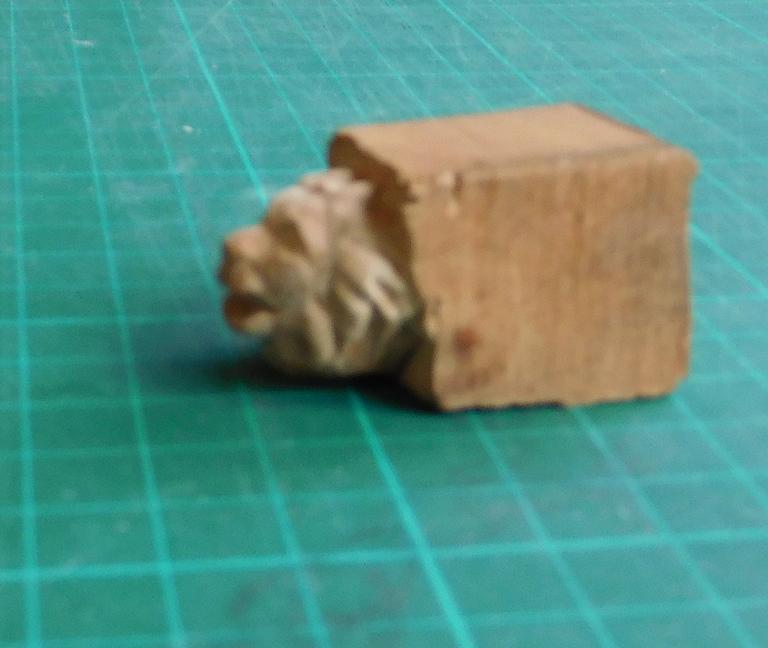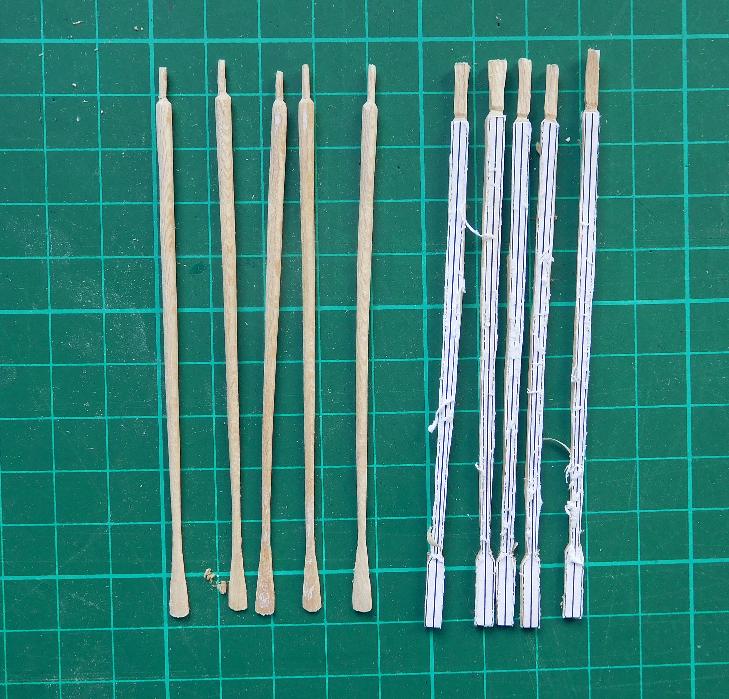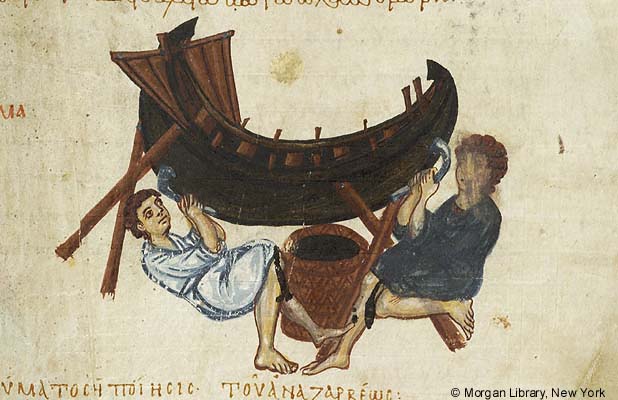-
Posts
7,987 -
Joined
-
Last visited
Content Type
Profiles
Forums
Gallery
Events
Everything posted by Louie da fly
-

Ancient Tireme being maintained by the Greek Navy
Louie da fly replied to dgbot's topic in Nautical/Naval History
Oh, she was out on the water just recently. One of our members got to be part of the crew. And they plan to do it again next year, I think. Steven -
Thanks for the congrats, Druxey. Yes, I thought it would have to be rebated, but I just didn't have any information or experience, except for a vague memory of a stempost from a Viking ship with rebates carved into it for the ends of the clinker planks. But different technique, different part of the world. Dick, unfortunately as far as I'm aware no stempost or sternpost survived from any of the Yenikapi galleys (unless Glenn knows of some . . . ?) But they've definitely found at least one keel with a rebate. Anyhow, I think I will extend the rebate into the stem and sternposts, just on general principles. Steven
-
I doubt anybody ever measured the Golden Hind's length - I believe all those figures would be rough estimates, and probably the tunnage is too. I agree with your statement . Let Mathew Baker be your guide and use your best judgment and you'll probably end up with a model closer to the real thing than anybody else has ever built, even if all the small details are different. Steven
- 756 replies
-
- galleon
- golden hind
-
(and 2 more)
Tagged with:
-
Today's a red letter day. I finally finished the last of the upper bank oars! Here are the final ten And here they are roughly in place - plus the steering oars. The second last oar was very frustrating - I'd got it trimmed to shape and was starting the rounding process, when SNAP! There was a knot right where the blade met the shaft. I tried gluing it back together, but it just wasn't strong enough. So I had to make another oar. Very annoying. I've noticed about 5 of the oars have a bit of a bow in them, and I'm hoping to be able to take it our with heat bending - but I'll have to be careful. I've also bent the tailpieces of the wales into their final shape - this is the port one - the starboard one is bent to shape but not smoothed off yet. I've also started cutting the plug back so the frames don't get stuck in the grooves when it's time to remove the model from the plug. The lighter coloured wood is what I've done so far. Surprisingly easy to do with a stanley knife. And as I cut away a section I re-draw that part of the guidelines for the wales and the locations of the oarports (in blue). It's not neat, but it does the job, and the hull is the important thing, not the plug. And I've also started smoothing off the wales, the keel and the sternpost/"tail" in preparation for putting everything together. By the way, I have a question - Can anybody let me know if the rebate/rabbet for the garboard strake is supposed to continue into the stempost and sternpost? Both stempost and sternpost on this model are somewhat unusual and I'm not sure what I'm supposed to do there. Steven
-
That is so beautiful, Glenn. And your usual exquisite workmanship. Interesting with the masts coming up through the hatches like that.
-
Glenn, as usual a brilliant piece of work. By the way, is there any chance you'll be putting up a build log of the Serce Limani ship, or is that impossible because it's for work rather than play?
-
Very beautiful, very elegant. I'm not sure your future trireme will be as pretty. Steven
- 473 replies
-
- greek bireme
- dusek
-
(and 1 more)
Tagged with:
-

PRINS WILLEM by juzek
Louie da fly replied to juzek's topic in - Build logs for subjects built 1501 - 1750
Is that a piece of mirror glass you used as a scraper? Nice idea. And the kitchen scourer for the final finish - I like it. Steven -
I couldn't agree more. Every time I try to rush something or work to a deadline - even if it's only a deadline I've set myself - I end up making mistakes and have to throw stuff away because it's not up to standard. By the time next year's show comes around you'll probably have completed the Mary Rose to your own satisfaction and feel good about putting her on show. Steven
-
There are 16th century drawings of a lateen yard being pulled around the mast on a galley - by Rafaello, if I remember rightly. It also shows the shrouds on the leeward side loosened to allow the sail to draw properly. But that was the Mediterranean - no ratlines in the shrouds. I doubt an English ship would have done the same. Lovely model of the Mary Rose, by the way, Bear. How did she do in the annual contest? Steven
-
A very impressive build, particularly from card. Such a strange stern the fluits had. Steven
-

PRINS WILLEM by juzek
Louie da fly replied to juzek's topic in - Build logs for subjects built 1501 - 1750
This seems to be a very unconventional build technique, but it works brilliantly! Nice to see new and unusual ideas. I'm very impressed. And beautifully precise work. Steven -
That's for sure. And I was feeling bad because I have to make 100. You are a glutton for punishment, Robin. Steven
- 473 replies
-
- greek bireme
- dusek
-
(and 1 more)
Tagged with:
-
Thanks for all the likes, everybody. I keep meaning to thank people in my posts and then forgetting. They are much appreciated. Steven
-
That's a very attractive colour for a very attractive vessel. How many of those wales does it have sticking out the back? Steven
- 473 replies
-
- greek bireme
- dusek
-
(and 1 more)
Tagged with:
-

PRINS WILLEM by juzek
Louie da fly replied to juzek's topic in - Build logs for subjects built 1501 - 1750
A very clever construction method - a 3-piece plug and staples! I take my hat off to you, Juzek. Steven -
Four oars to go . . . Yes, I should probably have them done by now, but I find every time I try to hurry I make mistakes. So now I just do them when I feel like it. Takes longer, but this is supposed to be fun, not a job or an ordeal, right? I've trimmed the plug at the stern - just shaved some of the thickness off - and now the wales are long enough and will join the keel nicely. They fit nicely at the bow: Here's a side view of the stern: The sternpost assembly (including the 'tail' of the keel) is just sitting there at the moment. I'll glue it in place when I've done some more preparation. As I mentioned in an earlier post the 'tail' of the gunwale is a separate piece which I've been bending to shape. I'm leaving it off for the moment until everything else is finalised. You can see the scarph joint where it's going to go. Here is the stern seen from right behind. The wales are still only loosely in place, but they've got enough 'give' so they'll fit nicely when it comes to gluing them on. And here is the stern seen from underneath. I'm pretty happy with how everything's fitting together. I'm usually a 'bash to fit' type of guy, so getting this level of precision is a bit unusual for me (and strangely therapeutic) . So far it's all being kept together by temporary screws - I'm just trying to make sure everything fits. Once that's done I'll be shaving the plug down so the grooves for the frames vanish (though I'll still be able to see where they've been). I realised that because the tail is a reverse curve, to take the hull off the plug I'll have to rotate it around the tail rather than just pull it straight off. If the frames sit in grooves they'll jam when I try to rotate. Then I put the frames in place (well, every second one, actually - the others will be put in place after the planking.). I'll be holding them to the plug with push pins near gunwale level; then put the keel in place and glue it to the frames; glue the bottom two wales in place and plank up to the second wale; Pull out all the push pins, put the gunwale on and glue it in place; Finish the planking. I've been waiting a long time to start the planking - it'll be a great relief to actually start putting the hull together so I finally have something to show for all the preliminary work I've been putting in. Steven
-
That does seem to help, but I still have trouble getting it all to focus properly. It keeps overriding what I'm doing, and never seems to be in focus when I want it to. These user friendly high tech cameras do have their downsides. Steven
-
That's a very elegant shape. And the holes are beautifully exact. Steven
- 473 replies
-
- greek bireme
- dusek
-
(and 1 more)
Tagged with:
-
Sorry, Bluto, but I think my jig is much more crappy and amateurish. Works, though . . .
-
Five oars down, five to go! I've smoothed off the lion's head somewhat and worked on his mane. Close to finished, but I'll have to put him to one side until I've done the hull so I can cut the back to fit against the bow of the ship. Something wrong with either my camera or my technique - a lot of the time it doesn't focus properly. This is the best I've been able to do. I took a leaf out of Druxey's book and put little brass pins in the top of the keel to fit in corresponding holes in the plug. I was hoping the guy across the road could make the holes with his drill press - I don't have one myself and I don't trust myself with a hand-held (electric) drill at this scale - the keel is about 4mm thick and the hole is 1.5mm diameter. But his chuck would take such a small drill-bit, so I had to go to Plan B. I used an awl and the pointy end of a triangular-section rat-tail file to start the hole, and then when it was well enough established I was able to make it bigger with the hand-drill. It all worked surprisingly well. I should have doe it this way earlier. The hole was still a bit tight and I was able to hammer the pins in (they're just brass escutcheon pins) and then cut off the heads. They sit nice and firmly. I've tried fitting the keel to the plug with the pins and it works well. As Eeyore said about his birthday present - it goes in and out like anything! I was fiddling with the keel and unfortunately I lost hold of it and it fell on the floor, and the tail broke off at the scarph joint. Perhaps a blessing in disguise - it makes fitting everything properly easier, and I can align it exactly against the plug when the time comes to glue it back together. But now the keel sits in place I've discovered that the wales are just a tiny bit too short (about 3 millimeters - 1/8") to join the keel properly at the stern. I'd got very disappointed at this, then - epiphany! I don't have to cut new pieces and scarph them to the wales to make them longer, I just need to re-shape the plug very slightly and shorten the keel a little (only a few millimeters), and they should come in nicely. A job for the coming weekend, perhaps, if i get the time. Oh, and I've found a contemporary picture showing a support for the steering oars which I like the look of. It's a Byzantine representation of scraping the hull of a ship. You don't see the steering oars, only the stocks the ship is up on, but the shape looks good. I'd been puzzling over what I was going to do and now I've got something I'm happy to go with. Steven
About us
Modelshipworld - Advancing Ship Modeling through Research
SSL Secured
Your security is important for us so this Website is SSL-Secured
NRG Mailing Address
Nautical Research Guild
237 South Lincoln Street
Westmont IL, 60559-1917
Model Ship World ® and the MSW logo are Registered Trademarks, and belong to the Nautical Research Guild (United States Patent and Trademark Office: No. 6,929,264 & No. 6,929,274, registered Dec. 20, 2022)
Helpful Links
About the NRG
If you enjoy building ship models that are historically accurate as well as beautiful, then The Nautical Research Guild (NRG) is just right for you.
The Guild is a non-profit educational organization whose mission is to “Advance Ship Modeling Through Research”. We provide support to our members in their efforts to raise the quality of their model ships.
The Nautical Research Guild has published our world-renowned quarterly magazine, The Nautical Research Journal, since 1955. The pages of the Journal are full of articles by accomplished ship modelers who show you how they create those exquisite details on their models, and by maritime historians who show you the correct details to build. The Journal is available in both print and digital editions. Go to the NRG web site (www.thenrg.org) to download a complimentary digital copy of the Journal. The NRG also publishes plan sets, books and compilations of back issues of the Journal and the former Ships in Scale and Model Ship Builder magazines.



